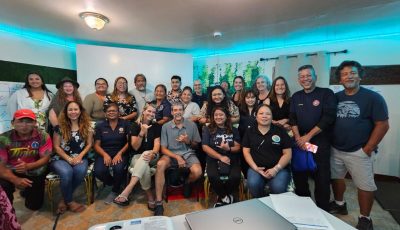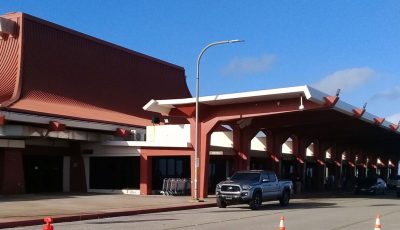CHCC, CPA working to identify isolation site for Ebola if it comes
The public hospital is working with the Commonwealth Ports Authority in identifying an area of isolation for the Ebola virus should it ever reach the CNMI’s shores.
According to Commonwealth Healthcare Corp. chief executive officer Esther Muña, enhanced entry screening is now being done at five major airports in the United States to try to prevent a U.S. outbreak.
“The CNMI has the resources and the manpower to isolate a person who may have Ebola,” she assured.
Muna said that Gov. Eloy S. Inos is fully aware of the surveillance team CHCC has created.
The process of isolating a patient who is found infected with the virus is through Contact Tracing, which is used to isolate active cases to stop the spread of the virus.
The process includes isolation and provision of care and getting the patient’s contacts and their contacts. If the contacts show symptoms, they are immediately isolated, tested and provided care. Other contacts are monitored for symptoms of sickness for 21 days.
Muña said that CHCC is monitoring daily and have resources from the federal government as well as adequate health professionals to handle the disease.
CNMI surveillance team
Warren Villagomez, director of CHCC Public Health and Hospital Emergency Preparedness Programs, makes sure that all surveillance activities and monitoring are done at all critical access points and sentinel sites every day, in accordance with Centers for Disease Control and Prevention guidelines and protocol.
Muna said that CDC continues to be CHCC’s reliable source for information for any communicable disease or outbreak.
CHCC will also be performing training exercises for their frontline staff and Emergency Room staff.
According to Muña, updates and protocol are being sent to local, state, and federal partners twice a week and they are in close communication with the CDC Quarantine Office in Hawaii for any support.
Advice to public
Symptoms for Ebola include fever greater than 101.5 degree Fahrenheit, severe headache, muscle pain, weakness, diarrhea, vomiting, abdominal (stomach) pain, and lack of appetite.
The symptoms may appear anywhere from two to 21 days after exposure to Ebola, although eight to 10 days is most common. Some who become sick with Ebola are able to recover. It is not fully understood why; however, patients who die usually have not developed a significant immune response to the virus at the time of death.
Ebola can’t be caught through air, water, or food and can only be gotten from touching blood or body fluids of a person who is sick with or has died from Ebola, touching contaminated objects, like needles, touching infected animals, their blood or other body fluids or their meat.



























